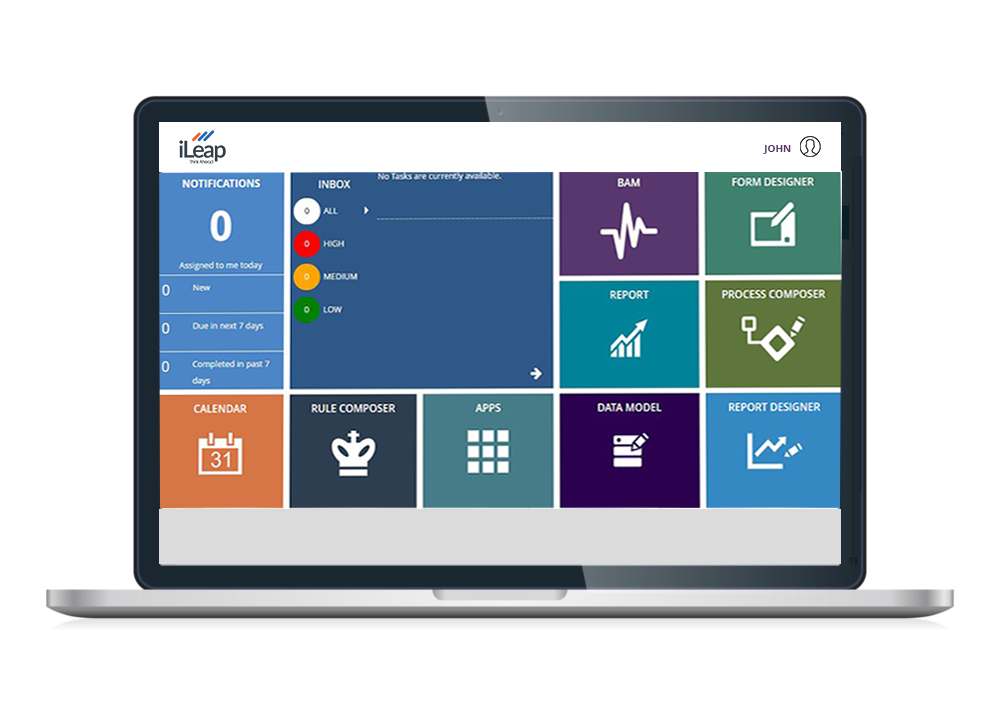Good News For Deciding On Legacy application modernization with Low-code
Good News For Deciding On Legacy application modernization with Low-code
Blog Article
Benefits Of Low-Code Development For Non-Developers In Terms Accessibility
Due to a range of key factors, Low-code Application Development is available to non developers. They are also known as "citizen designers."
Drag-and-Drop Builders: Low-code platforms have drag-and-drop interfaces which allow non-developers to design applications without needing to write code. Development is now more accessible to people with no technical background.
WYSIWYG Editors: "What You See Is What You Receive" editors allow users to build interfaces and workflows a manner that closely resembles the actual product, which makes it simpler to understand and use.
Simplified Workflow and Logic Design
Visual Workflow Modeling: Users are able to develop business processes, applications logic and flowcharts through models and visually-designed flowcharts. These techniques are more intuitive than the traditional methods of coding.
Low-code platforms are often equipped with pre-built logic components (e.g. the conditional loops, statements) which eliminate the requirement for complex coding.
Templates and components that are reuseable:
Templates for libraries of pre-built templates A lot of low-code platforms offer libraries for the most common types of applications, allowing non-developers to have a foundation to build on and later customize.
Reusable Widgets and Modules Users can use reusable widgets. This allows for a simpler creation and eliminates the requirement for deep understanding.
Guided Development and Tutorials
Step-by-Step Instructions Platforms typically provide tutorials that are on screen, guided development paths and other tools that help people who are not developers to create applications.
Interactive Tutorials Interactive and hands-on tutorials allow users to learn through doing. They gain confidence by making use of the platform.
Integration with Tools Already in Use
Seamless integration: Low-code platforms have been created to be able to seamlessly integrate with existing business systems and tools (e.g. ERP, CRM) permitting non-developers to create applications that fit into their workflows.
APIs Connectors: APIs integrate into applications to simplify integration. This allows non-programmers who do not have coding abilities, to connect to external services.
Collaboration Features:
Team Collaboration Real-time collaboration, shared workspaces and shared workspaces enable non-developers, business analysts and other users to efficiently work with professional developers.
Access control based on role: Role levels can be set for those who are not developers in order to ensure that they are able contribute to development without compromising the security.
Automated Testing and Debugging
Low-code platforms include tools to test and debug which are built into. They automatize this process, making it simpler for non-developers to ensure that their apps run.
Platform detects problems when they occur and offers fixes. This aids non-developers with problems.
Development using low-code is more accessible to non-developers as it makes development more accessible to everyone. Platforms that use low-code empower business users with easy-to-use, visual and guidance tools. They are then able to actively take part in the process of developing and maintaining applications. Have a look at the top rated more info on Low-code Platform for application development for website advice including rapid app development, cloud software applications, push notifications, rad development, app dev platform, application modernization, mobile app development platforms, developing mobile apps, cross platform mobile development, database in azure and more.
Cost-Effectiveness Is Just One Of The Many Benefits Of Creating Applications Using Low-Code.
Low-code development has many benefits in terms of cost efficiency. This is a great option for companies looking to reduce their development budgets, but still delivering high quality applications. Below are some of the main benefits.
Lower requirements for coding: Low codes platforms remove the need for extensive, hand-coded applications. Developers are able to take less time and energy creating applications. This means lower cost of labor.
We need fewer developers: Development that is low-code takes less time and is simpler. This means less developers are needed. It can reduce hiring and staffing costs.
More Time to Market
Accelerated Development Cycle The visual tools for development and the pre-built components offered by low-code platforms allow for rapid development of applications, which allows companies to bring their products to the market more quickly. This could lead to increased revenue and boost competitive positioning.
Rapid prototyping. Businesses can test quickly and create prototypes. This cuts down time during the development phase, and enables rapid iterations based on feedback from users.
Low Maintenance Costs
Simple Maintenance: Applications developed with low-code platforms are typically easier to maintain due to their standard components and modular architecture. This helps reduce maintenance and support costs.
Automated Patches and Updates Low-code platforms are able to handle patching and updating applications completely. This ensures that your application remains protected and always up-to-date without extensive manual intervention.
Efficient Resource Utilization:
Platform contributions that are low-code let businesses as well as other non-developers participate in the process of creating. This makes it possible for companies to benefit from the expertise of a broad range of employees.
Optimized IT Resource Use: IT departments will be able focus on strategic projects, rather than being buried in routine tasks of development. This will boost the overall efficiency and productivity.
Modular Pricing Models that Scale:
Subscription Pricing: A lot of platforms that use low-code provide flexible pricing models based on subscriptions that are scaled depending on the usage. This allows businesses to be able to align their spending to their actual needs and growth, avoiding large upfront costs.
Pay-Assosiated Options: Some platform providers offer pay-assosiated options. These options ensure that companies are only liable for the services used which is advantageous to startups and small business with limited funds.
Reduce the cost of Third-Party software:
Low-code platforms are built-in with functionality and integrations that could reduce the cost of subscriptions to software and licensing.
Pre-Built Integrations: Availability of pre-built integrations with popular platforms and services eliminates the requirement for custom development, saving both time and money.
Increased ROI
A faster return on investment (ROI) by making use of the rapid development process, less expense and a quicker time to market, businesses can achieve an increase in ROI for their applications.
Enhanced Agility: Businesses can quickly adapt to market changes and demands of their customers and ensure that they remain relevant and are able to capitalize on new opportunities that arise.
Costs of training are lower:
User-Friendly Interfaces: Low code platforms are user-friendly and have simple interfaces that reduce the time required to learn.
Accessible Resources A lot of low-code platforms provide complete training materials, tutorials, and support for community members, thereby cutting the requirement for formal education and associated cost.
Collaboration is simplified:
Enhanced Collaboration Tools: Built-in tools for collaboration aid in better coordination and communication between team members, resulting in better development processes and reduced project overhead.
Unified Development Environment. An unified development platform helps reduce expenses and improve workflows by reducing the complexities of managing several tools.
Overall, the cost effectiveness of software development using low-code is due to its capability to lower the cost of maintenance and development as well as increase the time to market as well as optimize the use of resources and also provide flexible pricing models. These elements provide huge economic benefits to companies. Low-code is a great option for companies that wish to maximize budgets but still develop robust, scalable and quality software. Read the top rated related site for Legacy application modernization with Low-code for more advice including stored sql procedures, microsoft azure sql, rapid applications, low code platforms, application modernization software, ms azure sql, develop web app, multiplatform mobile app development, developing mobile apps, develop mobile application and more.
Benefits Of Low-Code Application Development With Regard To Customization And The Limitations
Low-code app development is a well-balanced solution that offers significant benefits in dealing with limitations and providing the ability to customize. These are the key advantages: Managing Limitations
: .
Low-code development platforms are simpler to use since they offer already-built components, templates and various other tools. They also permit quicker deployment of even complex applications.
Guided Workflows: Many platforms have wizards or workflows that assist developers with complicated processes. This reduces the risk of error and ensures consistency.
Scalability Solutions:
Built-in Scalability: Low code platforms come with a variety of features that allow for an architectural design that is scalable, allowing the applications to handle increased loads without major redevelopment.
Performance Monitoring: Integrating tools for performance monitoring as well as tuning, optimization and tuning can aid in ensuring that applications are scaled efficiently.
Security and Compliance
Integrated Security Features : Low code platforms are equipped with security features built-in, such as encryption and access control based on role. They also conduct automated compliance checks to deal with security concerns.
Regular Updates: Platforms often update their security protocol and compliance measures. This helps ensure that applications are secure from new threats.
Customization capabilities:
Extensibility:
Custom Code Integration: Low-code systems typically permit the integration of custom codes (e.g., JavaScript, Python) that allows developers to enhance the functionality beyond the basic features.
Developers can add extensions or modules to address specific business requirements.
APIs and Integration
API Support: Comprehensive APIs support is available to enable seamless integration and connection with other systems.
Third-Party Applications Lowcode platforms are usually already built with connectors to third-party applications, which makes it easier to integrate these applications and personalize the app.
Designing UI/UX that is flexible:
Flexible User Interfaces for Developers: Designers are able to alter and create user interfaces to meet specific branding and usability requirements and provide a customized user experience.
Responsive Design: Built-in adaptive design capabilities make sure that applications can be tailored to fit different devices and screen sizes.
Business Logic Customization
Visual Workflow Builders: Visual tools that allow you to create and modify workflows, business logic and processes enable developers to design complicated and customized processes without the need for programming.
Platforms provide conditional logic that can meet certain business rules or situations.
Data Management:
Custom Data Modelling: Developers develop custom models to meet specific application needs. They can tailor the handling of data to meet business needs.
Advanced Data Processing: The integration of advanced tools and capabilities for data processing allow for customization of the method of analyzing data within an application.
Balancing limitations with customisation:
Frameworks, Standards and Standards:
Best Practices Compliance: Low-code platforms encourage adhering to industry best practices and standards, which aids in maintaining high-quality, flexible, and secure apps.
Governance Frameworks. Built in governance frameworks help ensure that customizations are not harmful to the security, integrity or the compliance of an application.
Iterative development and feedback:
Rapid prototyping. Developers can develop and modify applications based on the feedback of users.
Low-code platforms are designed to enable continuous advancement. This allows for customizations and enhancements as business requirements evolve.
Empowering Users
Enabling Citizen Developers: By giving non-developers the capability to modify their applications using intuitive interfaces and low-code platforms they boost the number of users who are able to improve and customize applications.
Support and training: A lot of platforms offer extensive training materials as well as support services to help users in creating customizations that are effective without affecting the performance or stability.
In the end, low-code application development gives you a framework that's robust and adaptable enough to handle constraints while also allowing plenty of customisation. This balance allows businesses to create and maintain functional apps designed to meet their requirements while maintaining high standards for quality, security and scaling.